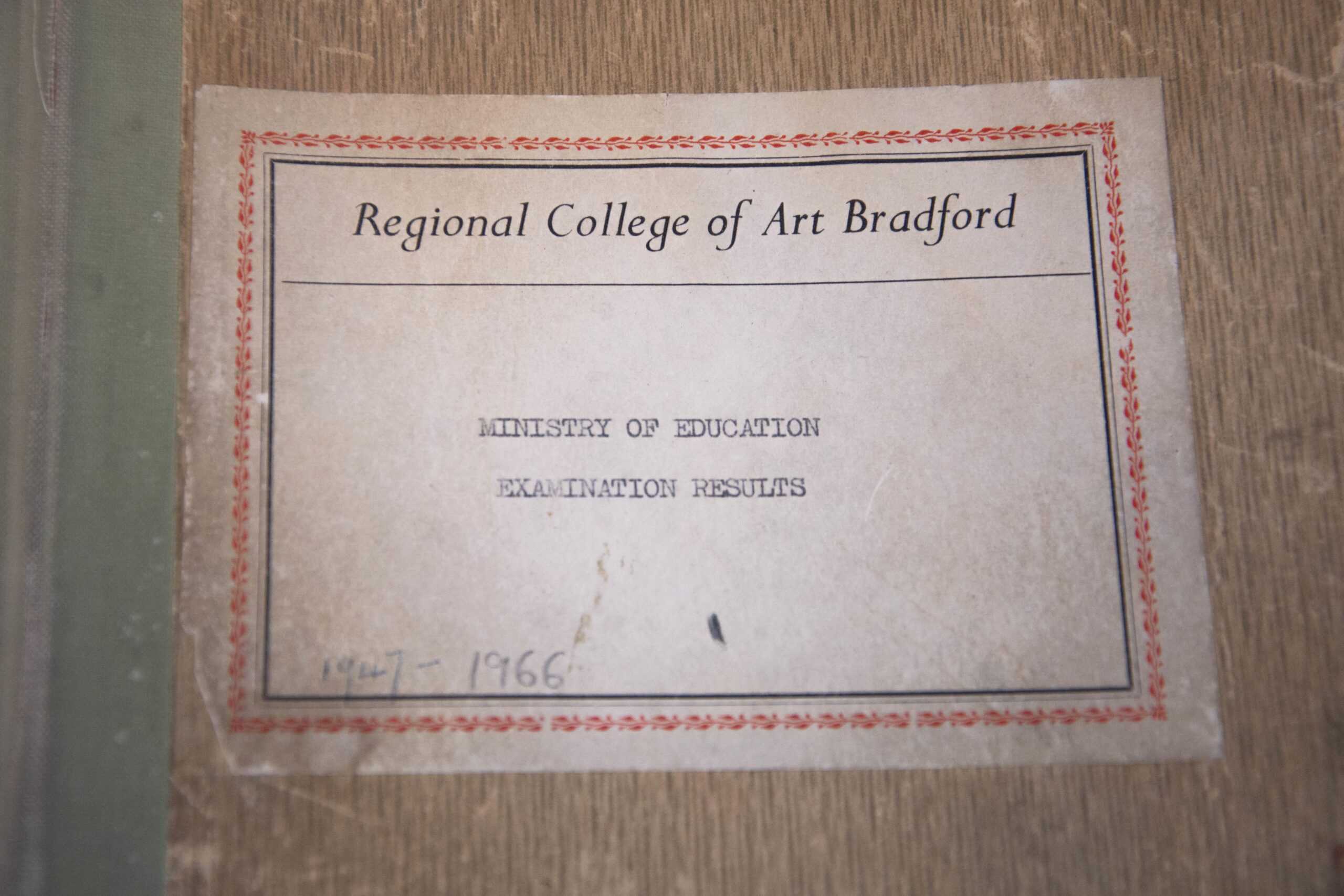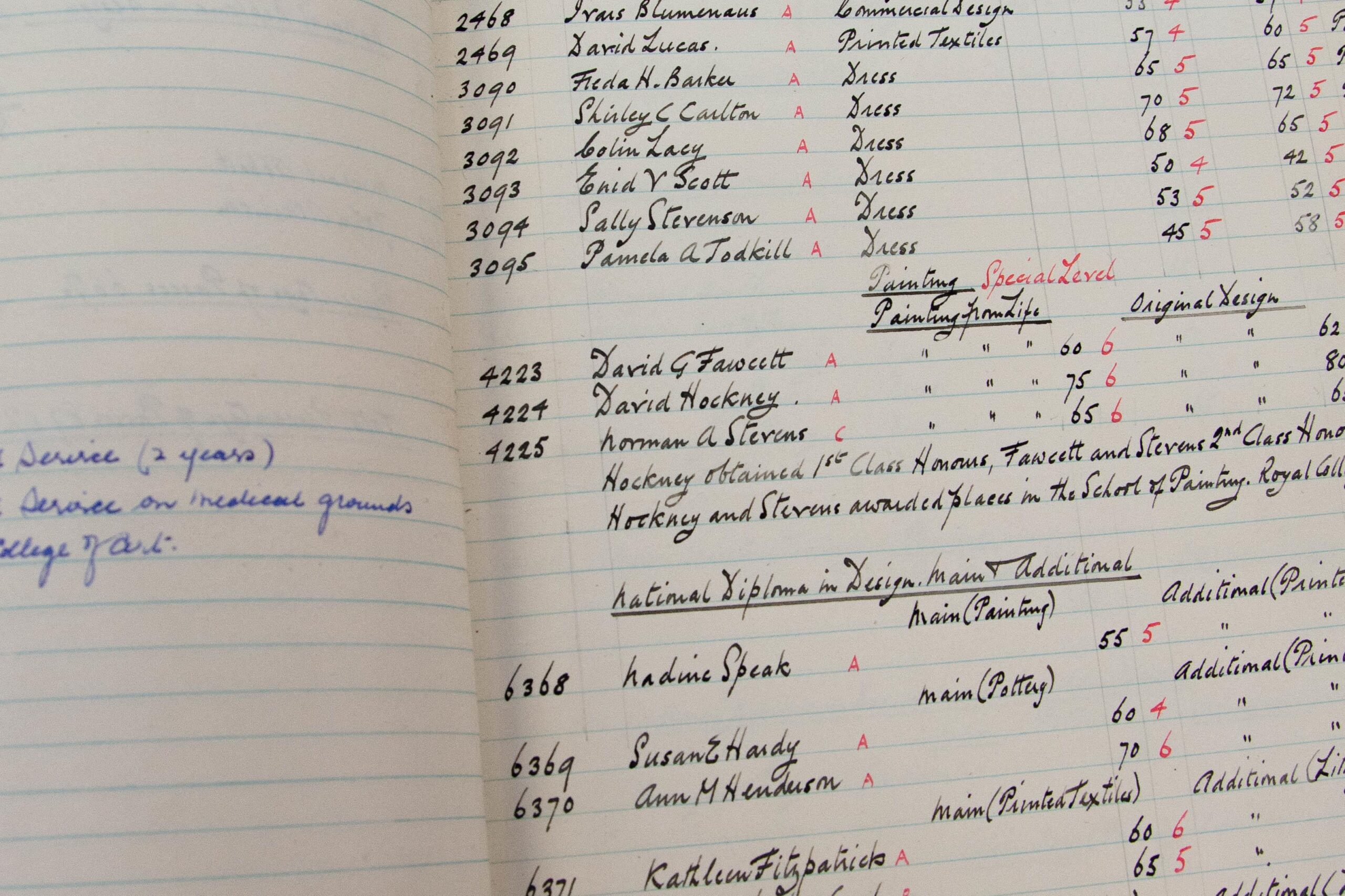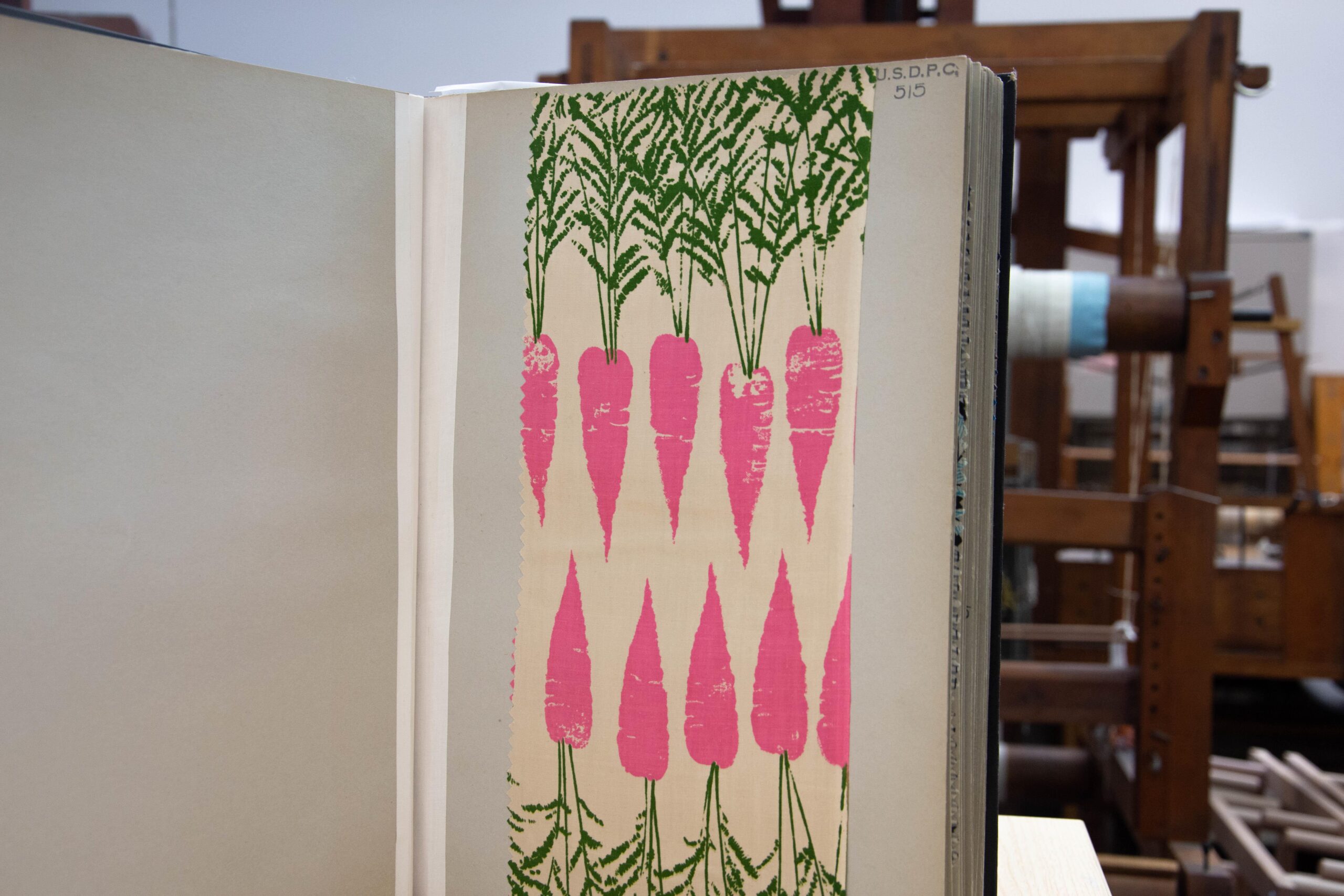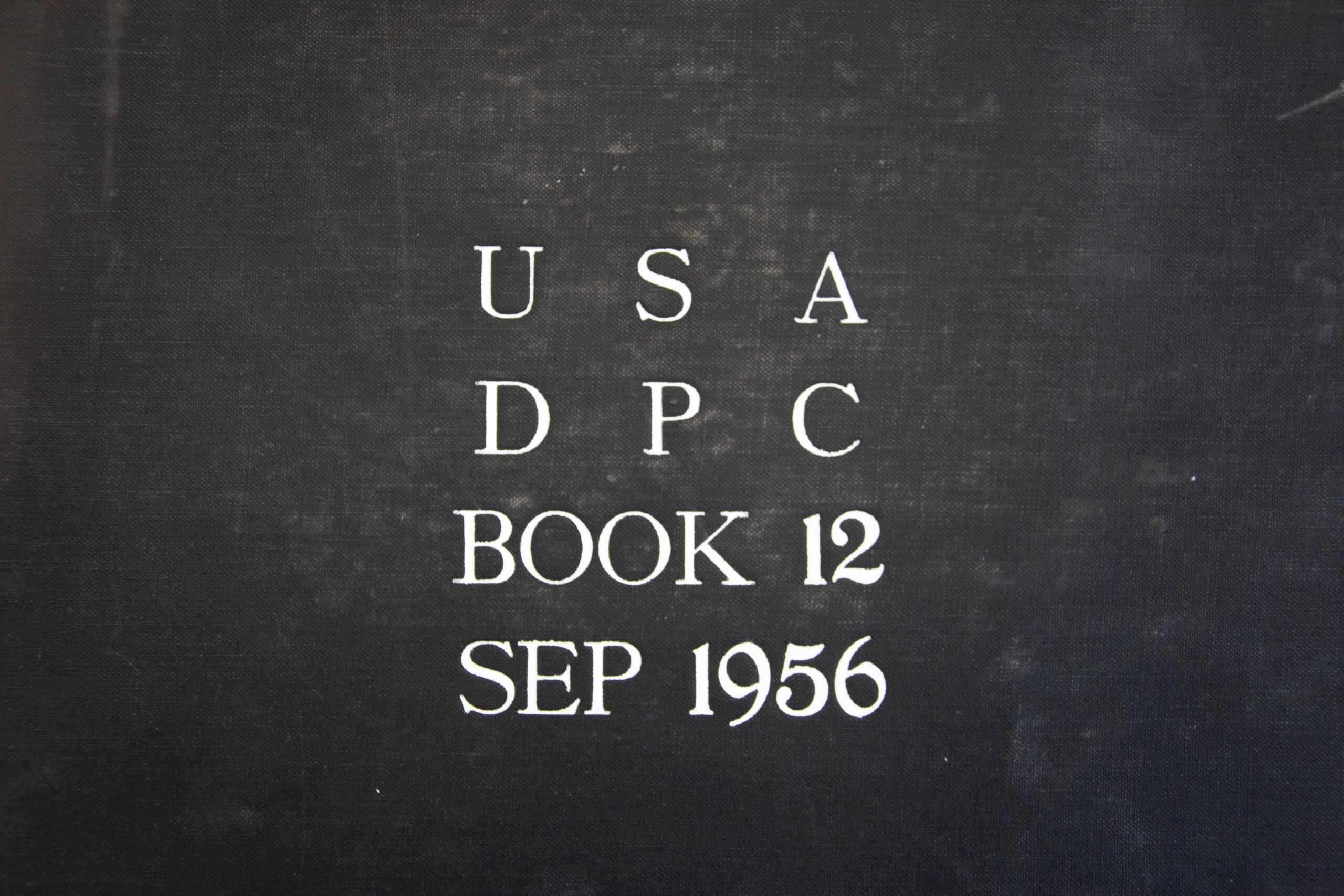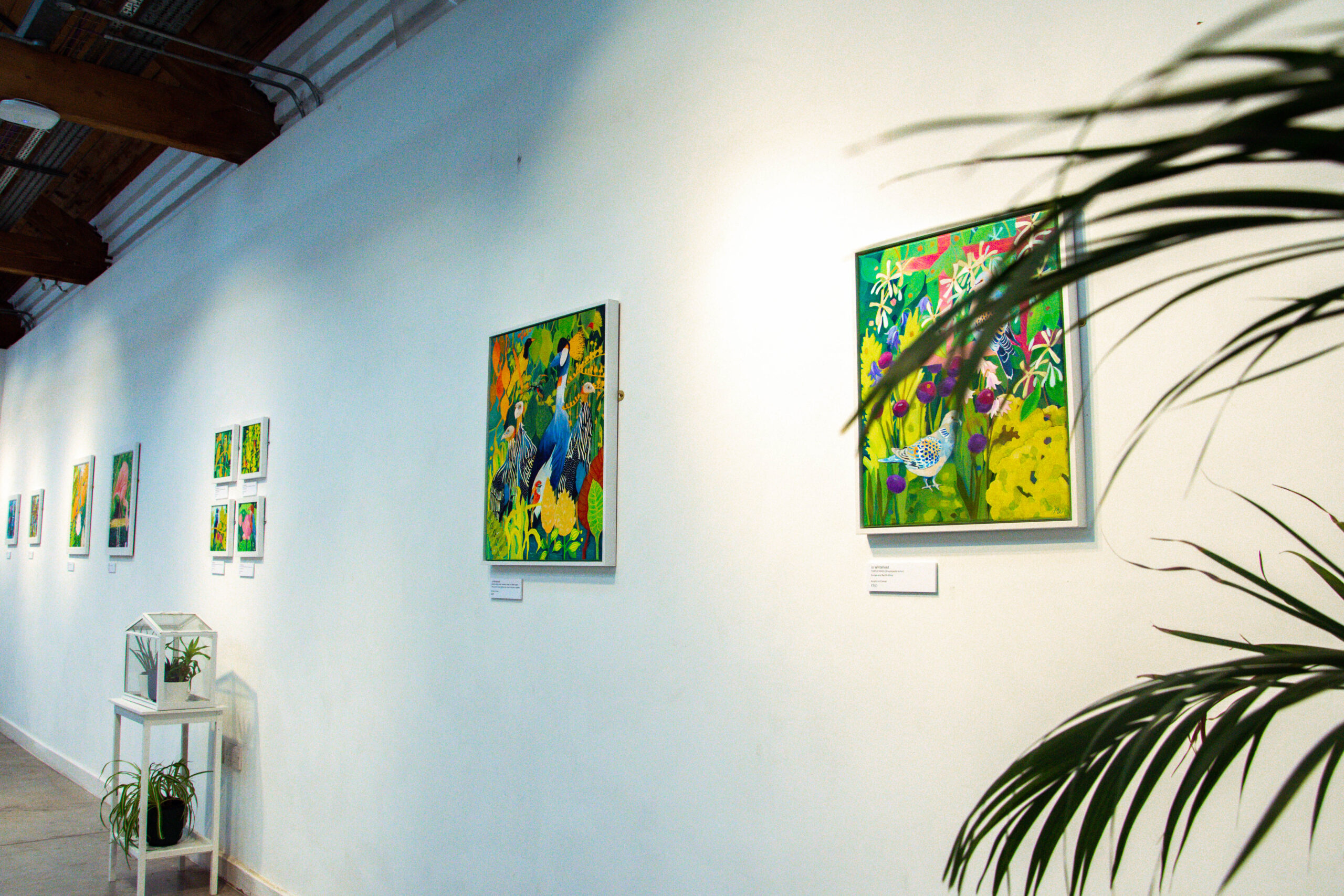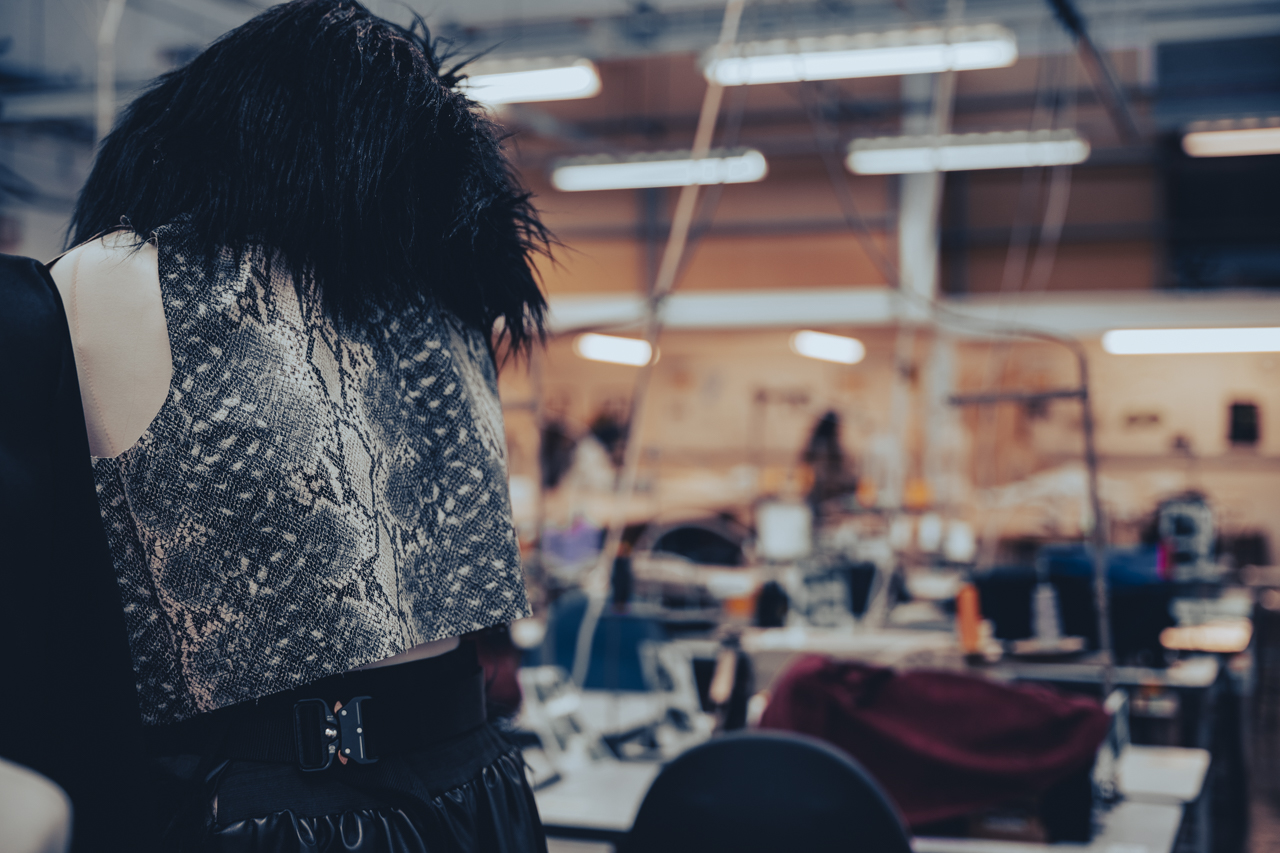Hockney, Heritage and Haberdashery
Tucked away in the iconic Bradford School of Art Lister building sits a facility bursting at the seams with history and intrigue.
The Bradford College Textile Archive has been a key part of campus fabric for years and is open to staff, students and the general public to access, study and just generally peruse.
In this blog, jumping at the opportunity to show off the special resource and what it can offer, curator Helen Farrar takes us on a journey back as far as the 1800s as she shares five of her favourite pieces.
Ministry of Education Examination Results Book
“This piece I’ve picked out is an examination results book from the Regional College of Art, Bradford in the period of 1947-1966.
“Although it doesn’t record every single student that came through the School of Art, it does feature some very famous alumni names such as David Hockney and Norman Stevens.
“We’ve had people who have come in and found the names of their parents using this resource so it’s certainly one for any family historians out there.
“It’s fascinating to know who was here throughout the years alongside the various household names we still recognise in the art and textile world today.
“Whoever compiled these records seems to have written them up year-by-year and then put it back on a shelf as it appears to have barely been touched and is still in great condition.”
Americas Collection
“This is a collection that was put together by a chap called James Cleveland Bell, who worked for the Manchester Cotton Board. When World War Two broke out and the government had their ‘make do and mend’ ethos, James realised this wouldn’t be good for business and went off to America researching and collecting different fabric samples that were selling well. He then brought them back to inspire British designers, following the realisation that if we lost the market it would be far harder to pull it back. When the war ended, he headed off to do similar in other countries around the world.
“I absolutely love it because it’s just so cheerful, naïve and simple with its look of carrots! I love the colours in it and it just makes me smile whenever I see it.”
The Textile Manufacturer Journal
“This is a trade journal dating back to the 1870s, with this particular one being from 1901. It’s full of innovations from within Bradford that seem to get forgotten these days. In the journal it speaks about a device called a ‘Designograph’ which could put motifs of fabric into repeats and swivelled them in certain ways to make them look like a totally random piece of fabric.
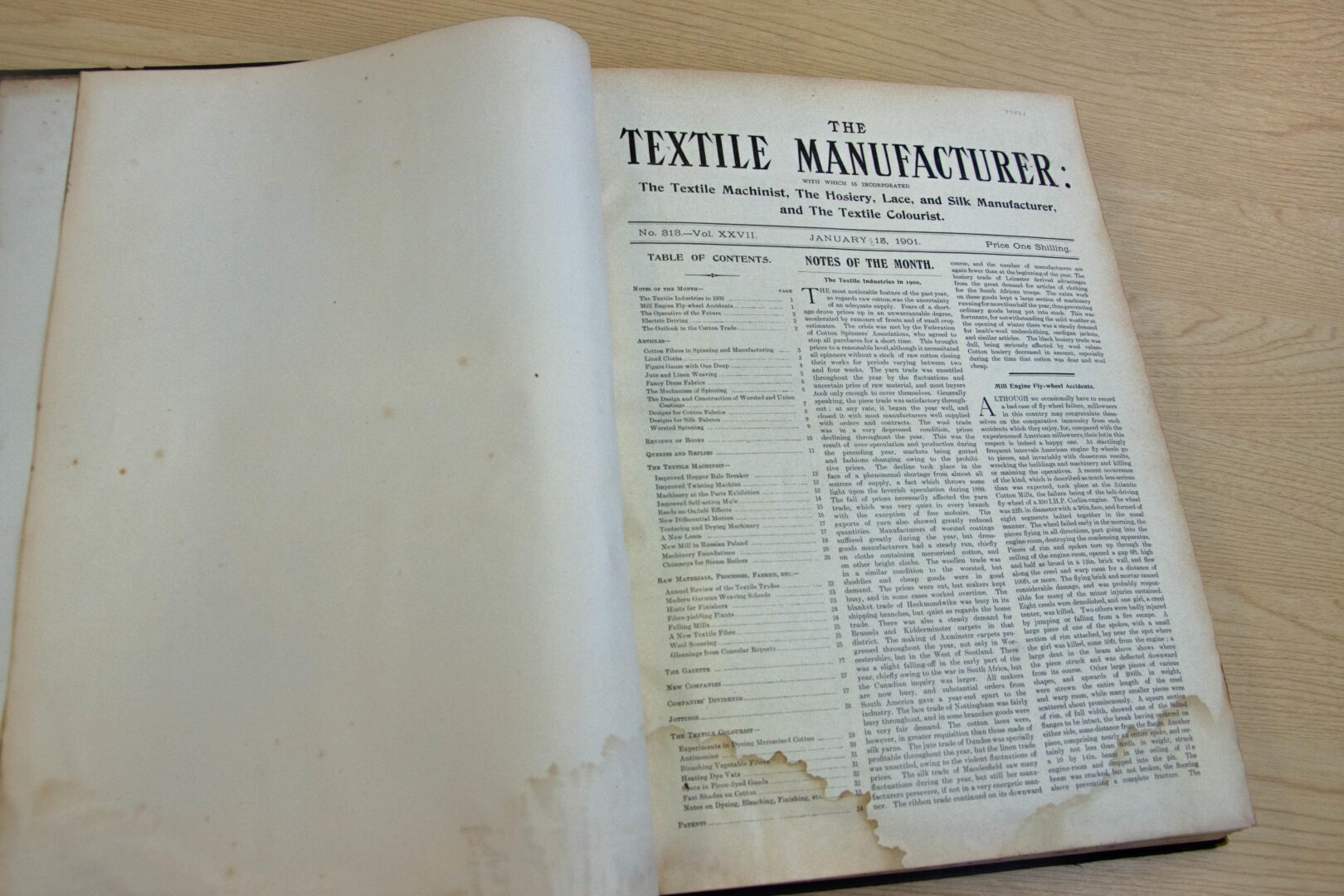
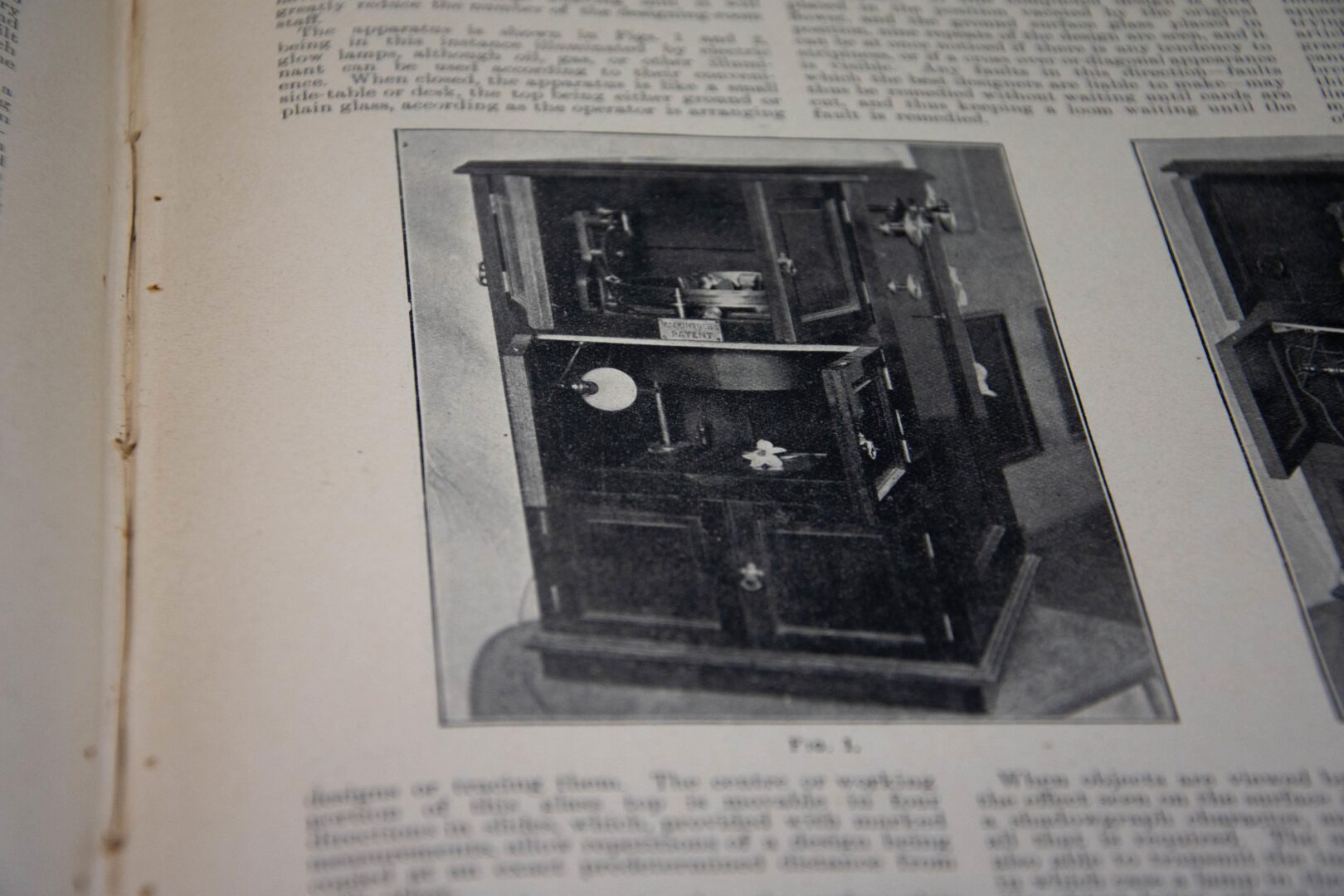
“This process took place in a shop at 23 Bank Street in Bradford city centre, meaning both designing and selling took place in Bradford. It’s amazing to think what Bradford was like 120 years ago and the shops that existed to service local trade.”
Denholme Textiles
“Here we have part of a particular collection by Denholme Velvets, a local company still operating today. Rather than being what they’ve produced, this is various bits collected for inspiration. They’re Paris Fashions and this particular one dates back to 1872.
“I find it remarkable as it has a look that it’s been woven in the modern day, the colour and the quality of the silk haven’t degraded at all. It looks like something you might see in a shop today by someone like Laurence Llewelyn-Bowen and out of context you wouldn’t know this was designed 150 years ago.
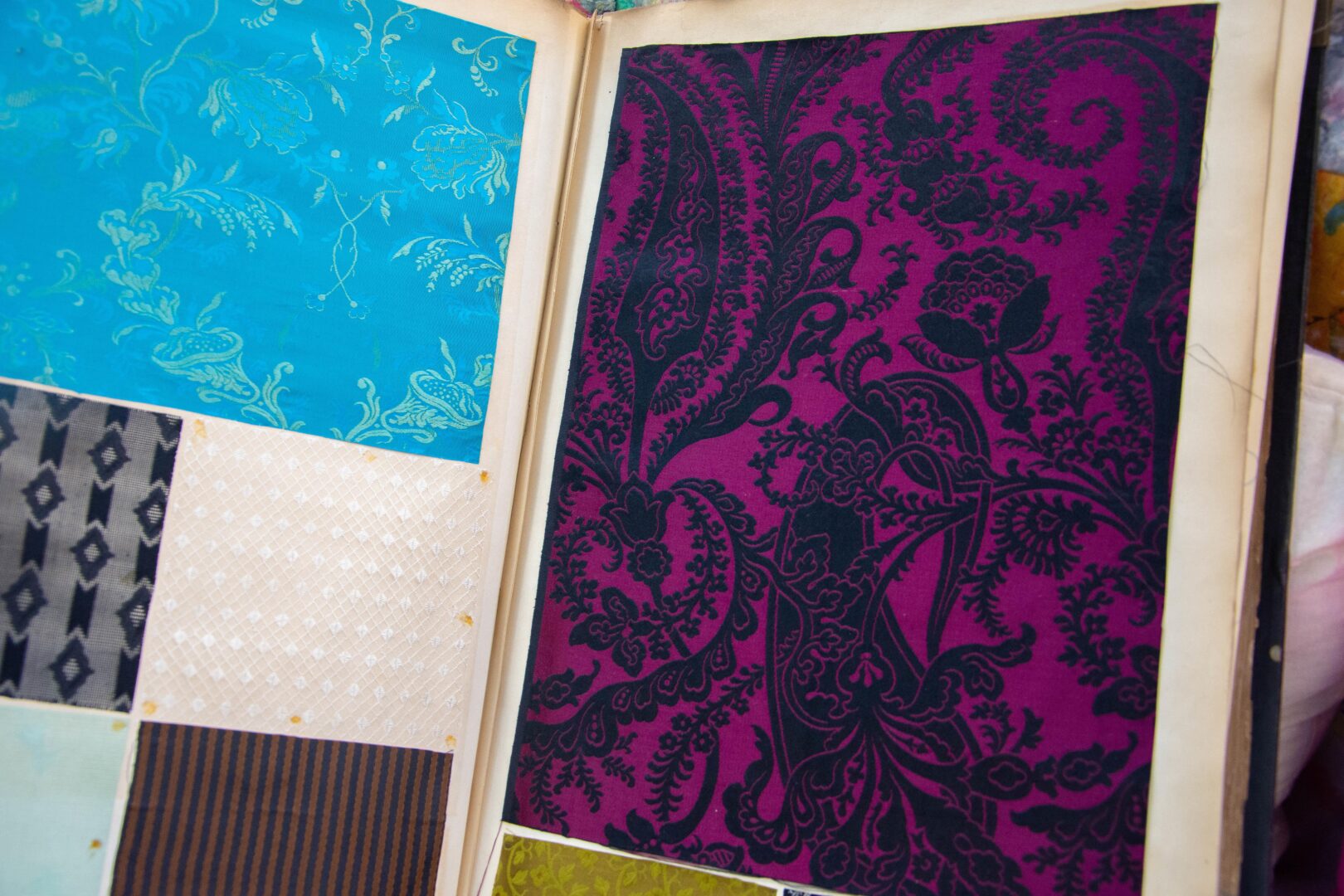
“It’s so interesting how fashion goes in cycles and something can be out of date one minute but then back in fashion a decade or two later.”
India Collection
“Last but not least we have a fabric put together in the 1860s known as the ‘India Collection’. The textile industry in the UK was going through a tricky period at this time and, as a result, the Secretary of State for India put together a series of books with fabrics from the India Museum in Kensington – now the V&A.
“The collection consists of fabrics shown at the Great Exhibition of 1851 and once again, these fabrics even pre-date this. Fabrics were cut up and sent to 20 different areas – seven in India and 13 across the UK – with Bradford Chamber of Commerce being one of these.
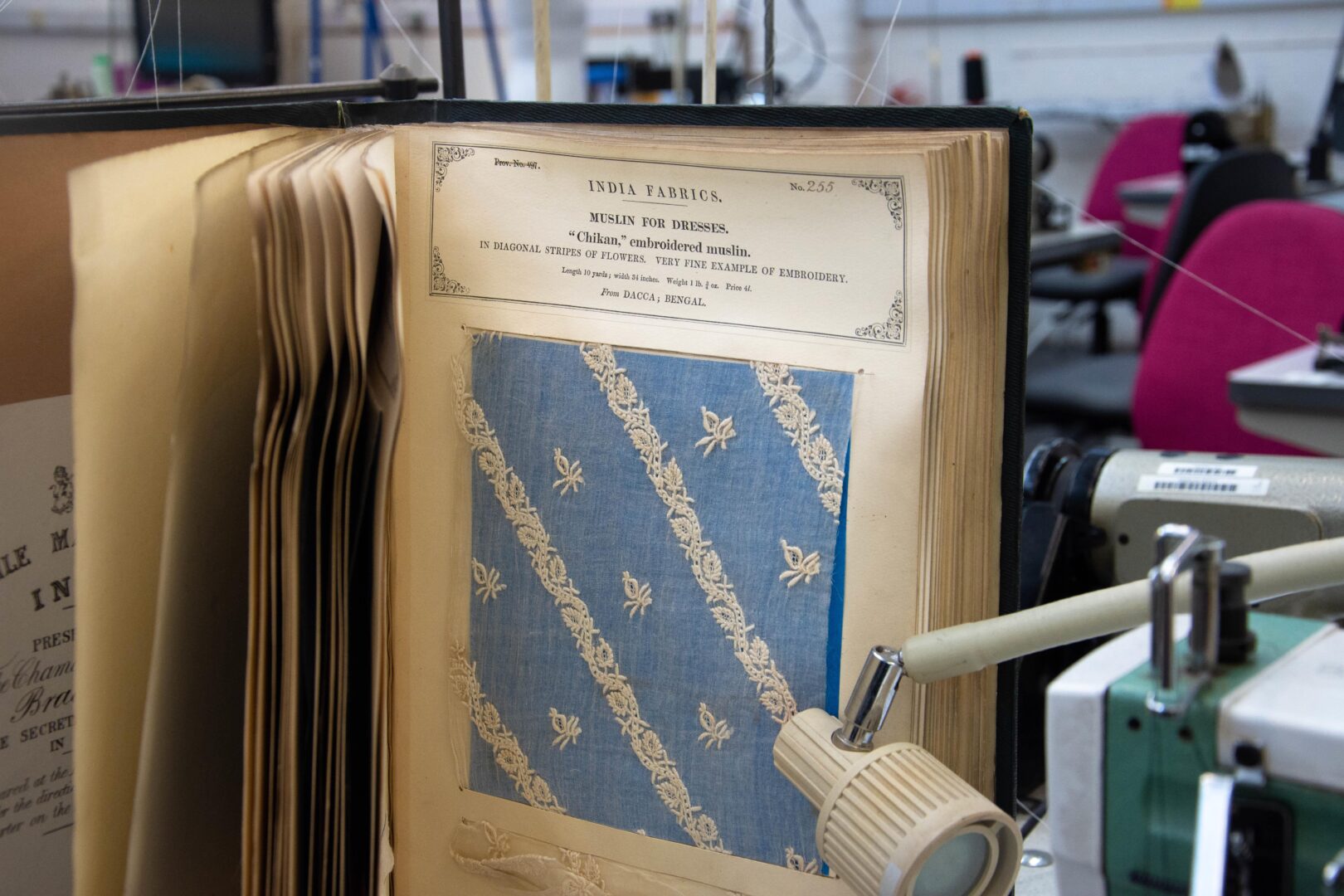
“They made their way to Bradford College in around 1900 to inspire our young designers and continue to inspire our learners today. This particular one picked out is a very fine muslin which is hand-embroidered with very thick yarn, technically it’s an incredible piece and you can’t even see the needle marks.
“This would be so difficult to produce and has all been done by hand; anything that’s done by hand is that bit more special than if it’s made by a machine. We also have the second series of this collection, which is even more rare, but I chose this one due to the human factor and the great level of care and attention that’s gone into it.”
Whether you’re a textile enthusiast or not, anyone can appreciate the abundance of stories and history that come with an archive that’s existed for over 150 years and counting. As technology continues to advance and life evolves more and more digitally, the uniqueness and value of the Bradford College Textile Archive shouldn’t ever be underestimated.
Our Textile Archive is accessible to all, regardless of whether you’re an active part of the Bradford College community or not.
If you’re interested in visiting the Archive for whatever reason you can contact curator Helen on [email protected] or come to our next Open Day for the opportunity to see all of our facilities.
